Adelaide-born architect Peter Muller had a deep concern for place, especially as it pertained to his native Australian landscape.
One of the country’s most highly regarded living architects, Muller designed the Bynya House in 1954 for his own family. Situated in a northern beachside suburb of Sydney, New South Wales, the house is a beautiful example of how his independent spirit applied in practice.
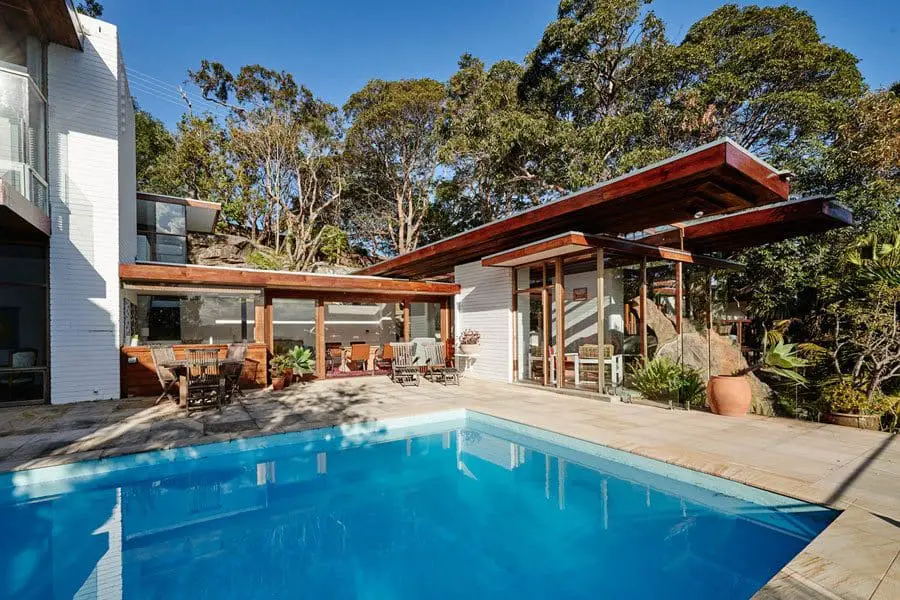

Muller was, along with a number of his Sydney-based architect contemporaries, influenced by Frank Lloyd Wright and other related contemporary developments in modernist architecture. However, he quickly sought independence from the somewhat strict confines of modernism, choosing instead to blaze his own trail by assimilating styles from various different cultures into the new modernist vernacular. In particular, the architect had a proclivity for traditional East Asian architecture.
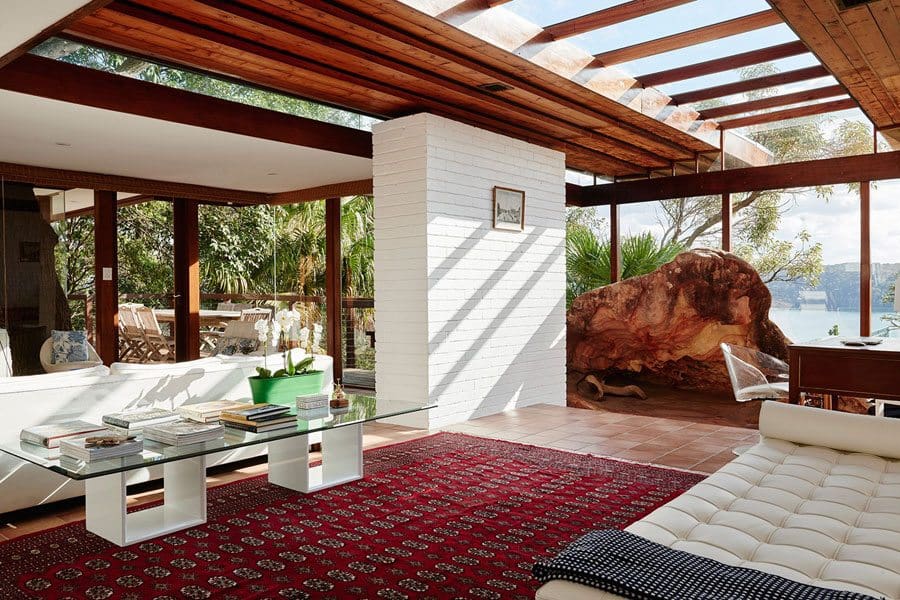
This influence is quite apparent in his Palm Beach house, in elements like the exaggeratedly overhanging eaves of the roof next to the swimming pool, the Australian hardwood beams of which are treated so as to bring out their remarkably vivid reddish brown. A similar touch can be seen in other Muller buildings, such as his earlier design for the Audette House, where again the eaves overhang such as to evoke one part Frank Lloyd Wright, one part traditional Japanese architecture.
SEE MORE: Harry Seidler: The Gissing House
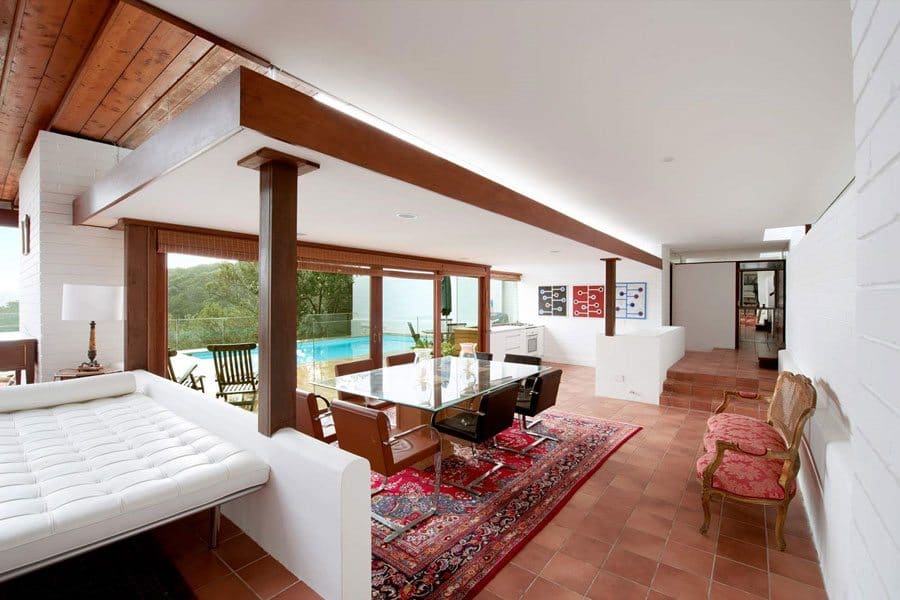
Another aspect Muller took from the Audette House design was the decision to have the entrance to the house open almost immediately into the main living area, rather than having a preceding entrance hall, as was customary at the time. As the architect explains in an article on the Audette House: “In the 50s most houses had entrance halls and you moved from there into the living rooms and dining rooms and so on”.
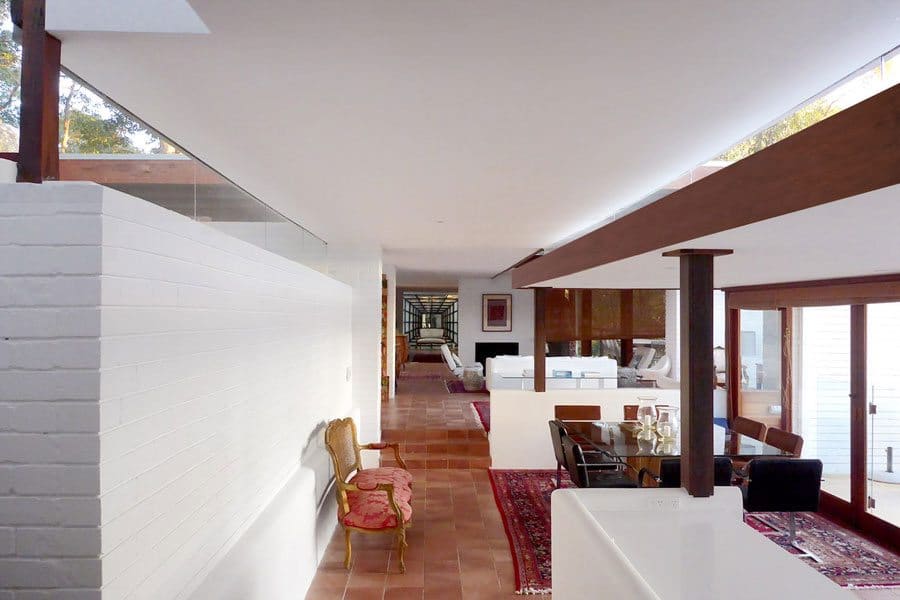
In this decision, the modernist influence was quite clear, where the number of partitions in the house was kept to a minimum, all the better to have the house flooded with light and all the better to have its occupants enjoying the beautiful view. But extra attention should also be paid to the design’s sensitive and distinctly unpretentious use of the surrounding landscape.
Indeed, Muller often emphasised the delicate details of his houses, explaining his approach as similar to music composition. This is most apparent in the piece of rock incorporated into the design of the living room. At first seeming a hulking piece of rubble, the texture reveals the deep layers or Australia’s particular geological history.
This sensitivity is also evident in how ensconced the Bynya House is in the surrounding bush vegetation, also the zinc roof that follows the original form of the roof, down to some of the minutest element, like the single timber window transom.
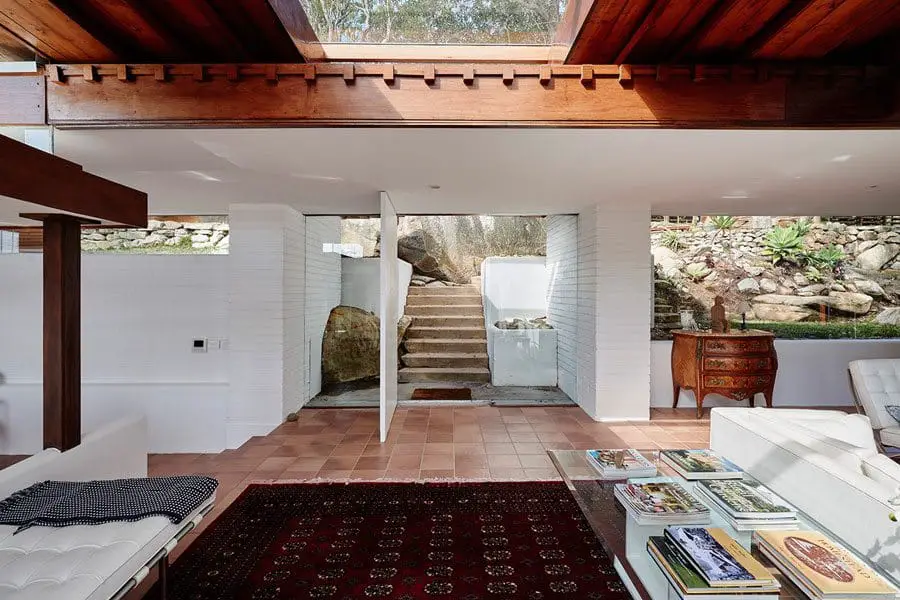
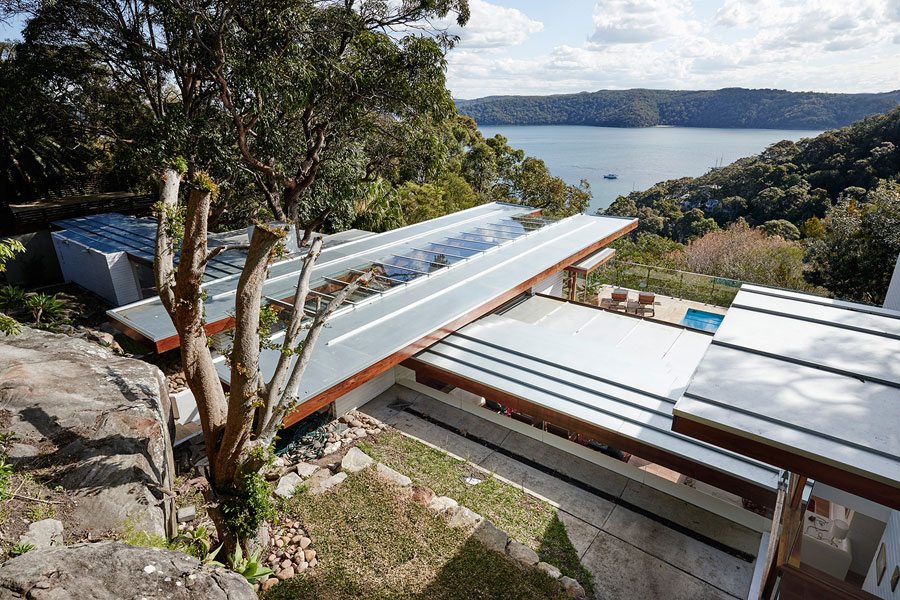
Photos by Michael Nicholson
To not only to adopt the modernist style, but to render it in a style that is distinctly his own was an incredibly confident position to take at the time, especially given that Muller was just 26 when the house was completed.
It is no surprise, then, that he went on to hold such an important position in the world of Australian architecture.